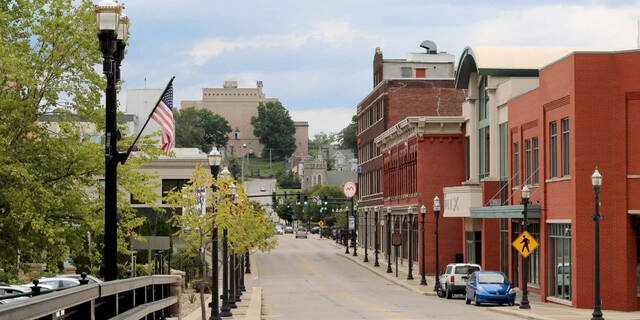https://mirror.triblive.com/local/regional/lawrence-county-added-to-pittsburgh-metro-area/
Lawrence County added to Pittsburgh metro area

Lawrence County, the birthplace of Donnie Iris, Chuck Tanner and Zambelli Fireworks, is now part of the Pittsburgh metro area thanks to a revised designation from the White House.
The move gives the Pittsburgh metro area a population boost of nearly 85,000 people, increasing its total to 2,434,021, based on U.S. Census figures from July 2022.
The U.S. Office of Management and Budget updated its definitions of metropolitan statistical areas last month. Previously, Lawrence County had been part of the New Castle micropolitan statistical area.
Lawrence County Commissioner Dan Vogler said the new designation makes sense and is a positive development for the county.
“The vast majority of us are Steelers fans, but there are still a handful of Browns fans here too,” he said. “We look at ourselves to be part of the Pittsburgh region, and this helps to solidify that.”
But he said the move makes sense from more than just a football standpoint.
Vogler said Lawrence County has only increased its ties to Pittsburgh in recent years. In 2009, officials redesignated the former northern portion of Route 60 to make it part of Interstate 376. The highway now goes south from I-80 in Mercer County through Lawrence County to Pittsburgh, where it continues east to the Pennsylvania Turnpike in Monroeville.
With that redesignation, three interstates now go through Lawrence County: I-376, I-79 and I-76 (Pennsylvania Turnpike).
While Lawrence County has been losing population in recent years along with most Western Pennsylvania counties, Vogler said he sees some signs of growth in the southeastern part of the county. He said new housing developments have popped up there, and he thinks demand for cheaper homes is increasing near the growing population centers in neighboring Butler County’s Cranberry area.
He said the rise of remote work and the county’s easy access to the three interstates position the county for future growth.
“We have slowly but surely seen a migration of people from Allegheny, southern Butler and parts of Beaver County,” Vogler said.
With the change, the Pittsburgh metro area now includes eight counties: Allegheny, Armstrong, Beaver, Butler, Fayette, Lawrence, Washington and Westmoreland. The last time a county was added to the Pittsburgh metro area was Armstrong County in 2003.
Chris Briem, regional economist at Pitt’s Center for Social and Urban Research, attributed Lawrence County’s addition to changing commuting trends.
In a 2021 update of its standards, the U.S. Office of Management and Budget said a micropolitan area would merge with a neighboring metro area if at least 25% of its working residents commuted to the metro area for work and at least 25% of people working in the micropolitan area commuted from the metro area.
Lawrence County is home to New Castle and other municipalities such as Ellwood City and New Wilmington. Vogler said with its proximity to Youngstown, there is still some pull to Ohio, but most Lawrence County residents associate with Pittsburgh.
Lawrence County Planning Director Amy McKinney said the change could help the county increase labor force access.
Adding Lawrence County provides Pittsburgh with a bit of statistical mirage.
Before the county’s addition, the Pittsburgh metro area had dipped 0.9% since April 2020. That placed the region in a similar camp with shrinking regions like Milwaukee, Boston and Detroit.
With the Lawrence County addition, the Pittsburgh metro area vaults up the charts for at least one year, even if by a technicality. Now, the Pittsburgh metro area has a post-pandemic growth rate of 2.6%, which is in line with regions like Las Vegas, Atlanta and Nashville.
In another change, Mercer County was designated as part of the Hermitage micropolitan area. Hermitage is the county’s largest city, with more than 16,000 residents. Mercer County had been part of the Youngstown-Warren metro area.
Copyright ©2025— Trib Total Media, LLC (TribLIVE.com)
